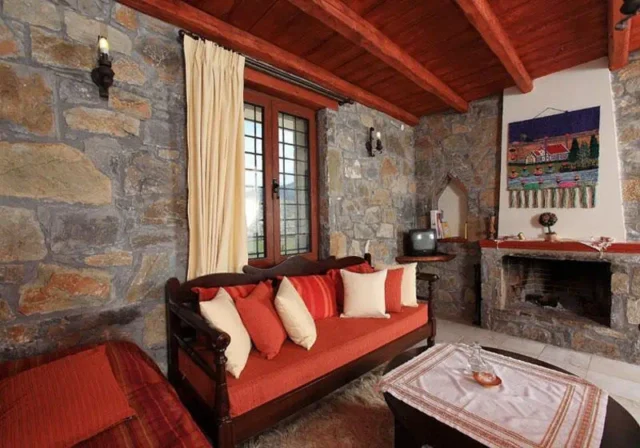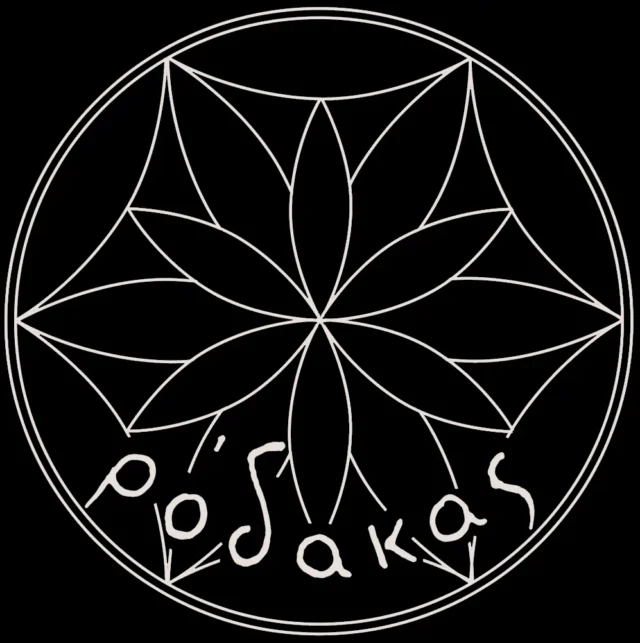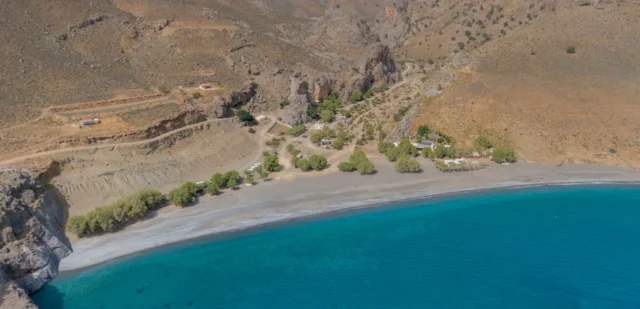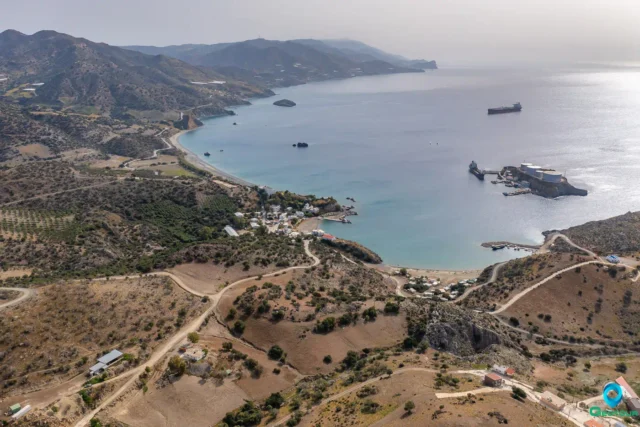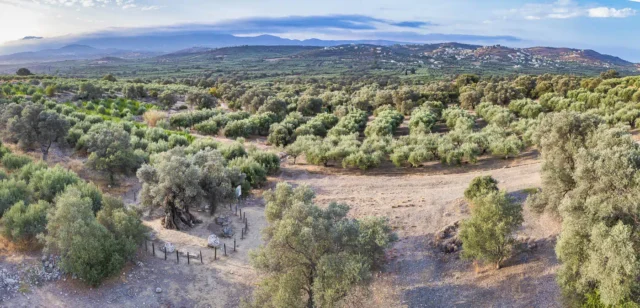829
listings found
Categories
Active filters:
Moni Koudouma
Koudoumas Monastery is one of the oldest monasteries on the southern coast of central Crete, Greece. It is situated at the exit of the Katarraktis gorge in the Asterousia Mountains, […]
Tsoutsouras
Located on Crete's S. coast (Heraklion), 63km S. of Heraklion town at the Mindris Gorge exit near the Asterousia Mountains. Site of ancient Inatos, Priansos' port. Features a ~2km sand/pebble beach with clear, calm, shallow waters, ideal for families, shaded by tamarisk trees. Organized with amenities like sunbeds, showers, and nearby tavernas. Local tradition attributes therapeutic qualities to the water. Accessible via a paved, winding mountain road. Nearby are Pera Tsoutsouras (shallow, sandy), Maridaki (pebble, isolated, gorge access), and Listis Beach (rocks). Offers a quiet, relaxing atmosphere.
Arodamos guest houses
At an original mountainous landscape of Crete, on the mountain Psiloritis, we have created the appropriate diggings to extend hospitality to the journeyer of the unique Cretan countryside, to whom […]
Rodakas
Rodakas is a community social group in Margarites, Rethymno, Crete, founded in 2017. Its mission is to preserve and celebrate the village's cultural heritage by creating a living archive of oral histories and photographs from local elders. The group organizes workshops on traditional Cretan crafts such as stone masonry, focusing on dry stone wall construction, as well as weaving on traditional looms. By documenting personal narratives and ensuring craft skills continue, Rodakas aims to safeguard the community's collective memory for future generations.
Trypiti beach
Located on the southern coast of Crete's Heraklion prefecture within the Asterousia Mountains, approximately 57-73 km south of Heraklion city and 12 km east of Lendas. It sits at the exit of the Tripiti Gorge. The name relates to local geology and the Panagia Tripiti chapel cave. Access involves unpaved dirt tracks from Lendas or Vassiliki, often requiring a 4x4 vehicle, particularly the route through the narrow final gorge passage. The 400m beach features fine pebbles, clear, calm waters sheltered by Cape Fylakas, though it deepens quickly offshore. Tamarisk trees and cliffs offer shade. Despite difficult access, it's popular with locals and can be crowded. Basic tavernas are available, but no organized facilities exist. The area, part of Natura 2000, sees local caravan presence. Activities include swimming, snorkeling, hiking to nearby Minoan ruins of Papouri, and stargazing.
Agios Pavlos sand dunes
Also known as Alatsogremnos, is a long sandy beach with towering sand dunes, perfect for swimming, snorkeling, and enjoying stunning sunsets.
Trafoulas beach and gorge
Trafoulas Gorge: A Geological Masterpiece in the Asterousia Mountains Trafoulas Gorge is a breathtaking geological formation located southeast of the village of Krotos in the Asterousia Mountains. Hidden from the […]
Kaloi Limenes beach
Kaloi Limenes, in Heraklion, Crete, is a coastal settlement with a natural harbor. The area is known for its rugged beauty and proximity to Lentas and the ancient city of Lasaia. A small islet named "Apostolos Pavlos" is located in the harbor and a nearby church is dedicated to Apostle Paul. The name Kaloi Limenes appears in the Acts of the Apostles and is associated with Apostle Paul's journey. During the Venetian era, it was known for smuggling activities.
Museum of ancient Eleftherna
The Museum of Ancient Eleutherna: An Ark of Civilization in the Cretan Landscape Construction Period: 2012-2015 Location: Within the archaeological site of ancient Eleutherna, near the villages of Eleftherna and […]
Ancient Eleutherna
The ancient city of Eleutherna in Crete, a significant center of power and culture from the Bronze Age to the Byzantine era with rich archaeological remains, including houses, public buildings, sanctuaries, and necropolises.
Gortyna archaeological site
Gortyna, located on Crete's Mesara Plain, was a major ancient city second only to Knossos. Inhabited since the Neolithic period (7000 BCE), it flourished during the Bronze Age under Minoan and Mycenaean civilizations. By the Archaic and Classical periods, Gortyna was a powerful city-state, sometimes allied with, sometimes rivaling, Knossos. In 67 BCE, Romans conquered Crete, making Gortyna capital of the province of Crete and Cyrenaica. The city thrived under Roman rule, with new infrastructure like the Praetorium, amphitheater, and Sanctuary of the Egyptian Gods.
A key discovery is the Gortyn code, the oldest known complete ancient Greek law, offering insights into 5th century BC social, economic, and legal structures. Gortyna embraced Christianity during the Byzantine era, evidenced by the Basilica of Saint Titus. The Arab conquest in the 9th century CE led to its decline. Today, Gortyna is a major archaeological site with ongoing excavations. Key sites include the Praetorium, Odeon (housing the Gortyn code inscription), amphitheater, Pythion Theater, Sanctuary of the Egyptian Gods, Basilica of Saint Titus, and Acropolis.
Psiloritis geopark
Psiloritis UNESCO Global geopark is an excellent destination for geotourism, combining opportunities for both recreation and education. Here, a visitor can enjoy outdoor sports, walks in nature ,the flavors and […]
Festos (Phaistos)
Phaistos, a significant Minoan city in Crete, second in importance to Knossos, located in the Messara Plain. It dates back to 4000 BCE with a palace built in 1900-1700 BCE. The city was destroyed by an earthquake around 1700 BCE and rebuilt with a larger palace. Phaistos had connections with Knossos, Hagia Triada, and Gortyn. Important findings include the Phaistos Disk, Kamares Ware, and architectural remains. After a decline, Phaistos was reoccupied in the Hellenistic period (c. 323-67 BCE) until conquered by Gortyn.
Mana Elia, ancient olive tree
The Monumental Olive Tree, or “Mana Elia,” is a 2,800-year-old olive tree located in Kamilari, Crete. It has been designated a natural monument due to its size and historical significance. The tree has a base perimeter of 9.5 meters and its trunk is marked by age. The Kamilari Cultural Association has placed twelve large stones around the tree for protection. Eight of the stones are carved with the double axe symbol associated with the Minoan civilization. Mana Elia is near the Kamilari Tholos Tomb and the Minoan Palace of Phaistos. It is a “Thrombolia” variety olive, locally called “Hontrolia,” grafted onto a wild olive rootstock. This grafting technique ensures the tree’s continued health. Mana Elia is a popular tourist attraction and represents Crete’s history of olive cultivation. It is valued for its historical and cultural significance.
Tholos Tomb of Kamilari
The Tholos Tomb of Kamilari, located on a coastal hill near Phaistos in Crete, is the largest and most well-preserved Minoan tholos tomb. Constructed around 1900 BC, it offers valuable insights into Minoan funerary practices. The tomb's proximity to Agia Triada and Phaistos suggests a connection to the elites of these settlements. The Kamilari cemetery includes three tholos tombs, with Tholos A being the most preserved, featuring a circular chamber, external rooms, and an open-air courtyard. Tholos B and C are partially preserved, with Tholos C repurposed as a shrine dedicated to Demeter and Kore. A research project is underway to study the cemetery, including its stratigraphy, artifacts, and human remains. The project aims to understand the changing mortuary behavior and social choices of the communities who used the cemetery over centuries.











